How to Improve Your Hotel Check-in Process? 6 Tactics that Work
When a guest arrives at your hotel, they expect to stroll into your lobby, get their room key, and head right up to their room.
But the reality can be long lines at the front desk and irritation over slow customer service.
And though your staff may not be at fault, they take the brunt of this frustration, adding more stress to their workday and impacting morale.
If this situation sounds familiar, it may be a sign you should reassess your check-in process—because guest and staff frustration doesn’t have to be the norm.
When you take the right steps towards improving the check-in process, like automating your tasks and digitizing key stages of the guest journey, you can eliminate the hassle for guests and meet their high expectations. Simultaneously, you’re better equipped to address labor shortage issues, boost staff morale, and reduce your operating costs.
This article will explore four signs it’s time to rethink your check-in process and walk you through six actionable tips for doing so.
4 signs you need to improve your hotel check-in process
If you’re experiencing any of the following issues, it may be time to update your hotel’s check-in process.
1. Long front desk lines
No one wants to wait in line, especially not right after a long flight, road trip, or train journey. If you’re accustomed to seeing people filling up in your lobby to check in, you need to revisit how you approach the arrival process and find ways to make it smoother for your guests.
2. Targeted guest complaints
Take a look at the feedback and reviews you receive from guests to discover whether check-in is causing real issues at your hotel. If they complain about long wait lines, a cumbersome arrival process, or slow customer service at the front desk, you know you need to change something.
And a sub-optimal check-in process can change how a guest views their entire stay—here’s an example of a bad arrival experience resulting in a scathing review and one-star rating:
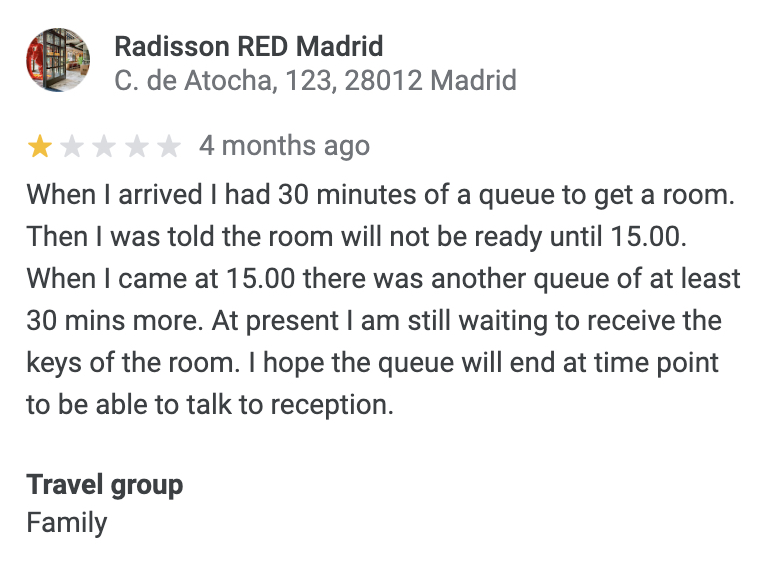
3. High staff turnover
With an average annual turnover rate of 86.3% in the accommodation and food services industry, you may be accustomed to seeing your staff churn frequently. But if you notice your employees are quitting at higher rates than usual, it might be a sign your check-in process is causing them extra stress and burnout.
4. Negative employee feedback
Just because your front desk staff aren’t leaving doesn’t mean everything’s going fine. Getting negative feedback from employees about their workload, your processes, and general productivity at the front desk is a good indicator that your check-in process needs an overhaul.
6 effective ways to improve your hotel check-in process
The key to modernizing and improving the check-in process at your hotel is giving your guests more independence and removing waiting times. This cuts out any negatives from their experience, and gives your front desk staff some much-needed breathing space.
Through automation, digital check-in, and mobile access, you let your guests control their stay at every step of the journey, including:
- Booking
- Pre-arrival preparation
- ID verification and security deposit payment
- Self check-in
- Room access
Implement these six steps to improve the check-in process at your hotel and give your guests a smoother, more seamless experience, from the moment they make their reservation until they step foot in their room.
1. Automated pre-arrival instructions
The check-in process begins long before a guest arrives at your hotel. By automating pre-arrival steps, like sharing directions and parking details, you ensure your guests have all the information they need ahead of time to get their stay off on the right foot.
So use a guest engagement platform to automatically share arrival details and instructions with your guests at a specified time before check-in. That’s how Operto Guest works—your guests have all the information they need at their fingertips and don’t have to worry about contacting the front desk to ask about check-in time or parking instructions.
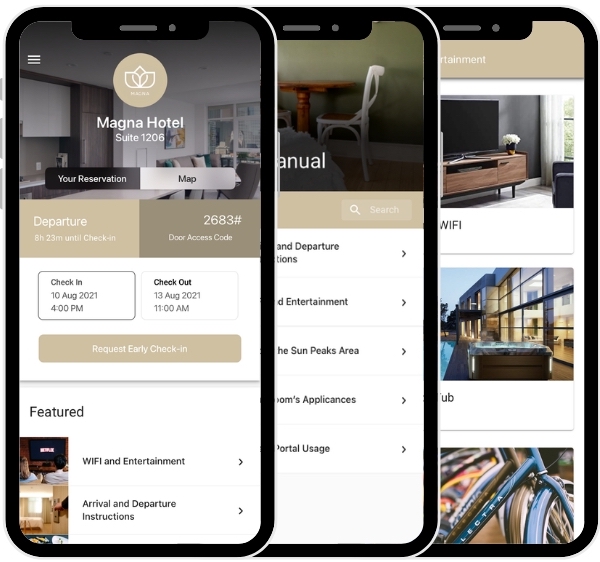

2. Convenient guest engagement platform
In addition to sending arrival instructions, you can share other helpful information when you use a guest engagement platform like Operto Guest.
The mobile-optimized web app doesn’t just share arrival details with guests: They can also use it to access all the information they need on their mobile device, as well as message your team if questions arise.
And Operto lets you customize your welcome message flow, so you can personalize your welcome screen and choose which information you want guests to see first to provide them with the smoothest arrival experience possible.
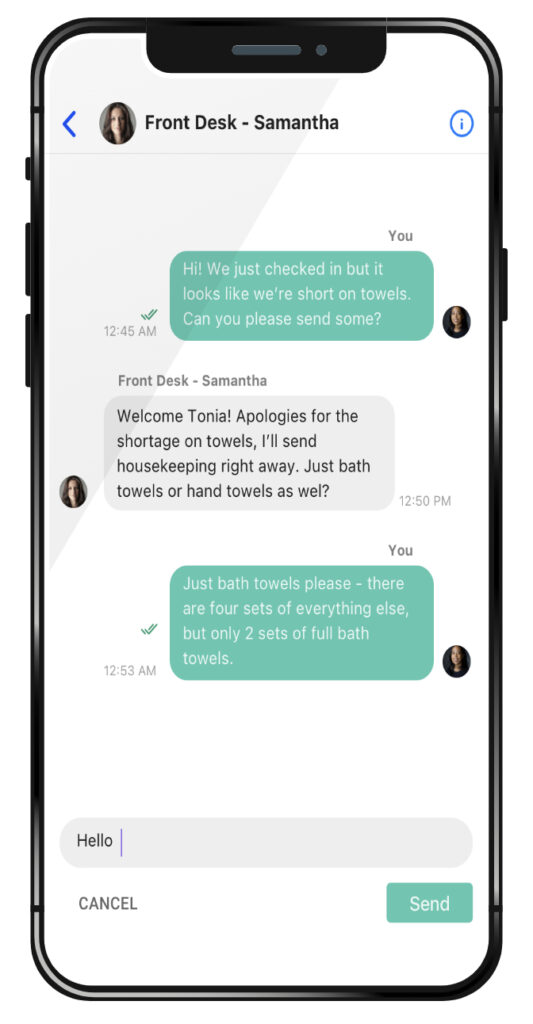

3. Comprehensive digital guidebook
Instead of having to wait in line at reception to request concierge services, give your guests helpful information about your hotel and the local area in a digital guidebook. You can share it before check-in so guests can start planning their stay ahead of time and give them the chance to see your amenities (and purchase add-on services).
Include categories like a guide to guest services at your hotel, a room manual, and curated local recommendations so your guests feel prepared to make the most of their stay the moment they arrive. This gives your guests the option to browse your happy hour menu and order ahead while they travel.
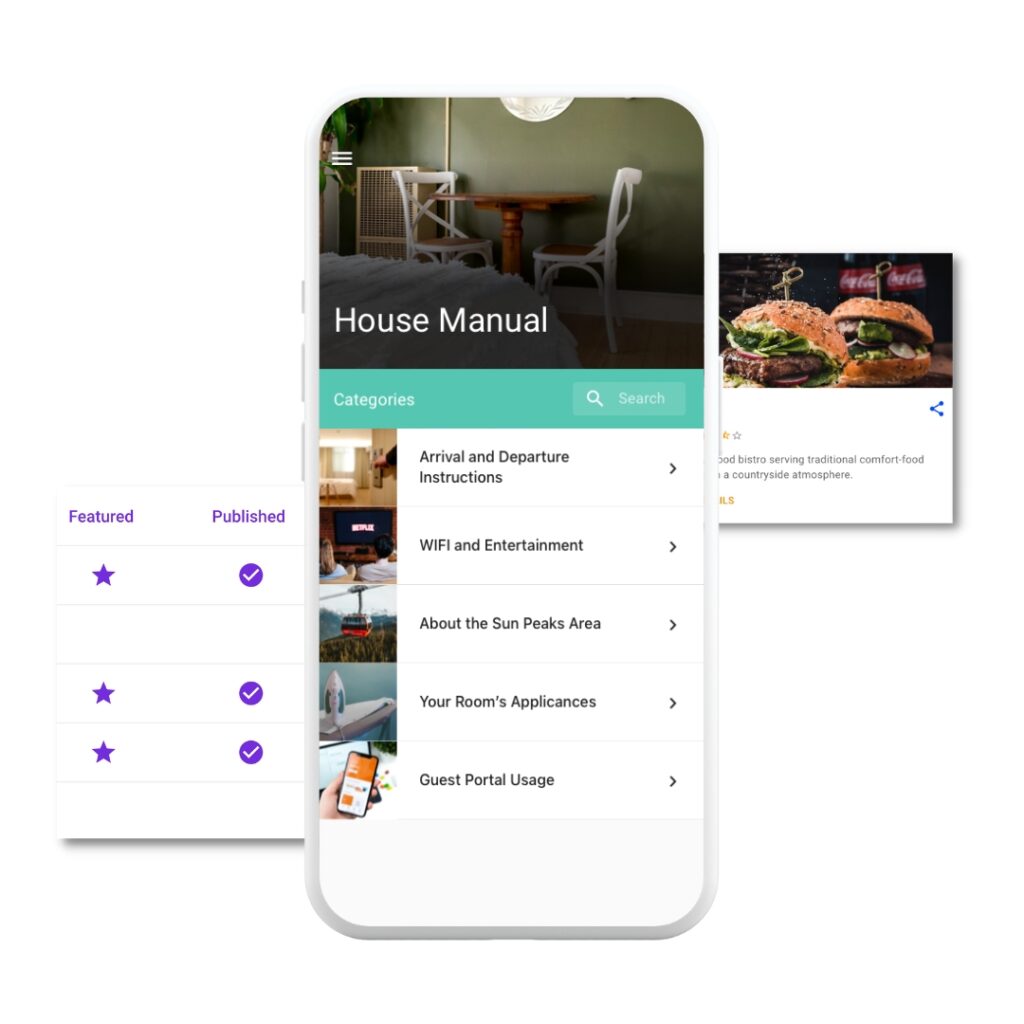

4. Digital ID verification and security deposit collection
Getting their ID verified and paying a security deposit is the last thing a guest feels like doing after a long day of travel. But by digitizing the process, you allow guests to verify their identity and pay the deposit in an instant.
Operto Guest lets guests upload their identity documents, verify their personal details, and upload a photo, all on their mobile device. This is all part of a streamlined security verification process that includes tailored guest screening based on your customized requirements.
Plus, your guests can pay their security deposit right on the Operto Guest web app—so no need for a visit to the front desk.


5. Mobile check-in
In-person check-in can be cumbersome, frustrating, and time-consuming, both for guests and staff—to improve your hotel check-in process (and, in turn, guest satisfaction), you need to give your guests the option of online check-in.
By letting your guests check in on their smartphone, you create the frictionless, independent experience that the modern guest expects.
With Operto, your guest’s online check-in is directly integrated with your access management system, so you get a clear overview of who’s checking in and when.
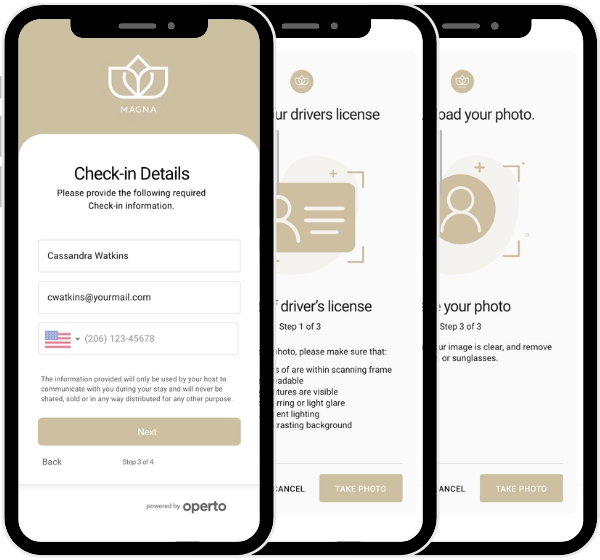

6. Automated access activation
Once guests have verified their ID, completed their security deposit, and checked in via Operto Guest, we activate their unique mobile key based on their check-in time. This takes an entire step out of the check-in process, eliminating the need for a visit to reception to pick up a key card.
Of course, you’ll need smart locks to make this possible. And while overhauling all your locks would normally require a large investment, you can upgrade your locks with Operto Boost at a fraction of the price.
So, when integrated with a guest engagement platform and solution for remote access management, contactless check-in at your hotel is the definitive way to improve the arrival process.
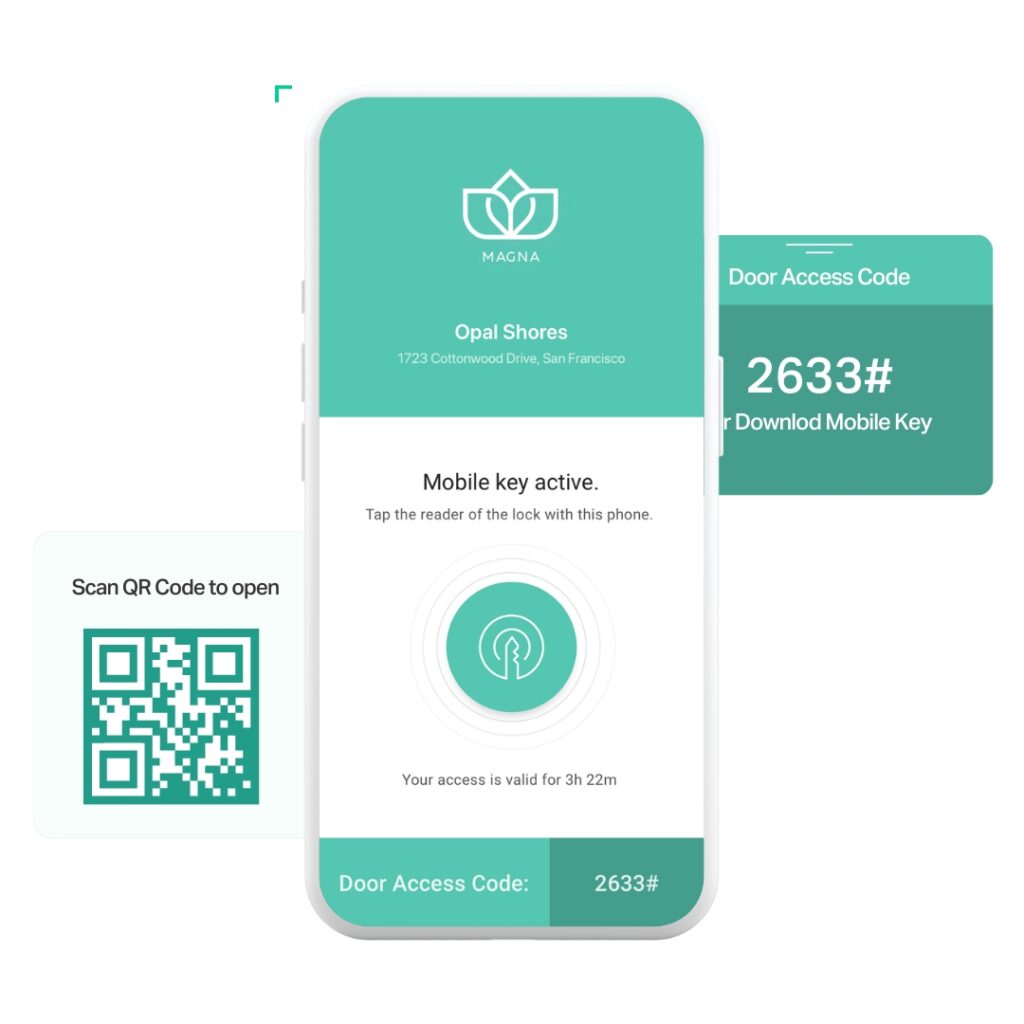

Pro tip: When you upgrade your locks with Operto Boost, you get seamless integration with the Operto platform, so you can automate the process of mobile key generation and activation. |
A modern, contactless experience is the future of hotel check-in
With the technology available today, there’s no reason a guest should have to wait in line in your lobby to check in. That’s why implementing solutions like a guest engagement tool, digital ID verification, self check-in, and contactless access are your key to a smoother check-in process.
Not only will your guests appreciate an autonomous and frictionless stay, but your staff will enjoy:
- A lighter workload
- Less stress in their day-to-day tasks
- An better overall work experience
And you’ll see an upturn in team morale, smoother operations, and reduced front desk operating costs.
Give your guest the modern experience they expect, from the moment they book until they leave a glowing review.
Frequently asked questions about improving hotel check in process
Why is the check-in process so important in hospitality?
The check-in experience is one of the first impressions a guest gets from a hotel, so it can have a lasting impact on the experience they have throughout the rest of their stay. And after a long day of travel, guests want it to be as easy as possible to get up to their room and relax.
That’s why it’s so important to meet guest expectations as soon as guests check in at your hotel.
What are the benefits of improving your hotel check-in process?
When you improve your check-in process, you’ll see more than just happy hotel guests. Some benefits of improving your hotel check-in process include reduced pressure at the front desk, less stress for hotel staff, smoother processes, and an enhanced guest experience.
What are the steps of a hotel check-in process?
The hotel check-in process begins before a guest even arrives at your hotel. The steps of a hotel check-in process include:
- Booking
- Pre-arrival preparation
- ID verification and security deposit collection
- Check-in
- Room access
How long does it take for guests to check into a hotel?
How long it takes for guests to check into a hotel is impacted by a number of variables. In an empty lobby, check-in could take mere minutes. But if you’re short-staffed and at full occupancy, guests could end up waiting in line upwards of 30 to 40 minutes.
However, if you implement an automated hotel check-in system, guests can independently complete the process, verifying their personal details and gaining access to their room in less than a minute.